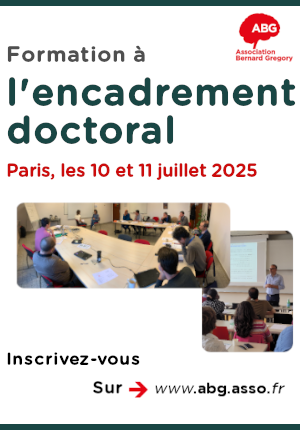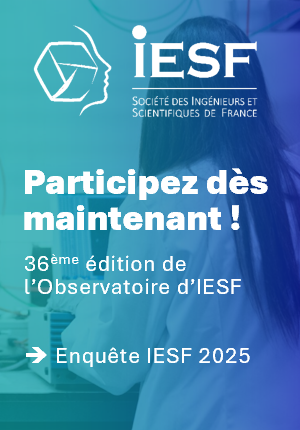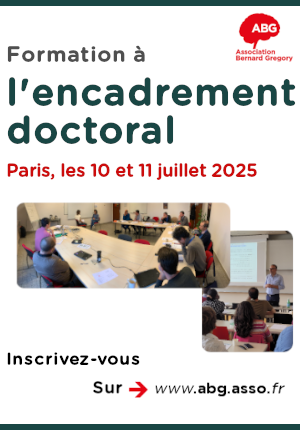Utilisation des outils satellitaires pour la détermination de la contribution des eaux souterraines aux zones humides // Using satellite tools to determine the contribution of groundwater to wetlands
|
ABG-131437
ADUM-65515 |
Thesis topic | |
| 2025-04-25 |
Université d'Orléans
ORLEANS - France
Utilisation des outils satellitaires pour la détermination de la contribution des eaux souterraines aux zones humides // Using satellite tools to determine the contribution of groundwater to wetlands
- Earth, universe, space sciences
Images satellites , eaux souterraines, zones humides , interactions
remote sensing, groundwater, wetlands, interactions
remote sensing, groundwater, wetlands, interactions
Topic description
Le bon état écologique des zones humides dépend fortement de leur état hydrique. Période, durée et hauteur d'eau au sein de la zone humide est, pour un grand nombre dépendant des apports souterrains. Ces apports, invisibles pour un grand nombre d'acteurs, ont un impact quantitatif et chimique qu'il est nécessaire d'évaluer pour comprendre les enjeux environnementaux de préservation des zones humides. La surveillance des relations entre les eaux de surface et les eaux souterraines est aujourd'hui peu développée et repose principalement sur des piézomètres et stations de mesure des hauteurs d'eau. Landsat ou TERRA ainsi que les missions opérationnelles du programme Copernicus (également connues sous le nom de Sentinel) offrent d'autres possibilités de surveillance grâce à une disponibilité accrue des données d'Observation de la Terre provenant de différents capteurs (SAR et optique), des résolutions spatiales améliorées, des couvertures plus étendues et des cycles de répétition plus courts. Si ces données satellitaires sont actuellement bien utilisées pour délimiter les zones humides peu est déjà fait pour définir l'intensité des échanges entre les eaux souterraines et les zones humides. Pour réaliser ce travail il convient de croiser les données satellitaires de divers programmes avec des mesures de terrain et du traitement de données historiques. L'étude proposée liée au projet Innov'eau ZH-Scan en collaboration avec Pixstart a pour objectif le développement de méthodologies pour comprendre les interactions ESO-ZH (Eau Souterraine – Zones Humides) en croisant surveillance in-situ, connaissance hydrogéologique-hydrologique et traitement des images satellites. Le travail sera réalisé sur 3 sites pilotes faisant l'objet par ailleurs d'études détaillées.
------------------------------------------------------------------------------------------------------------------------------------------------------------------------
------------------------------------------------------------------------------------------------------------------------------------------------------------------------
duration and height of water within the wetland is, for many, dependent on underground inputs. These inputs, which are invisible to many stakeholders, have a quantitative and chemical impact that needs to be assessed in order to understand the environmental issues involved in preserving wetlands. Monitoring of the relationship between surface water and groundwater is currently underdeveloped and relies mainly on piezometers and water level measurement stations. Landsat or TERRA, the operational missions of the Copernicus program (also known as Sentinel) offer other monitoring possibilities thanks to the increased availability of Earth Observation data from different sensors (SAR and optical), improved spatial resolutions, wider coverage and shorter repetition cycles. While these satellite data are currently well used to delimit wetlands, little has yet been done to define the intensity of exchanges between groundwater and wetlands. To do this, satellite data from various programmes needs to be cross-referenced with field measurements and historical data processing. The proposed study, linked to the Innov'eau ZH-Scan project in collaboration with Pixstart, aims to develop methodologies for understanding ESO-ZH (groundwater-wetlands) interactions by combining in-situ monitoring, hydrogeological-hydrological knowledge and satellite image processing. The work will be carried out at 3 pilot sites, which are also the subject of detailed studies.
------------------------------------------------------------------------------------------------------------------------------------------------------------------------
------------------------------------------------------------------------------------------------------------------------------------------------------------------------
Début de la thèse : 01/10/2025
------------------------------------------------------------------------------------------------------------------------------------------------------------------------
------------------------------------------------------------------------------------------------------------------------------------------------------------------------
duration and height of water within the wetland is, for many, dependent on underground inputs. These inputs, which are invisible to many stakeholders, have a quantitative and chemical impact that needs to be assessed in order to understand the environmental issues involved in preserving wetlands. Monitoring of the relationship between surface water and groundwater is currently underdeveloped and relies mainly on piezometers and water level measurement stations. Landsat or TERRA, the operational missions of the Copernicus program (also known as Sentinel) offer other monitoring possibilities thanks to the increased availability of Earth Observation data from different sensors (SAR and optical), improved spatial resolutions, wider coverage and shorter repetition cycles. While these satellite data are currently well used to delimit wetlands, little has yet been done to define the intensity of exchanges between groundwater and wetlands. To do this, satellite data from various programmes needs to be cross-referenced with field measurements and historical data processing. The proposed study, linked to the Innov'eau ZH-Scan project in collaboration with Pixstart, aims to develop methodologies for understanding ESO-ZH (groundwater-wetlands) interactions by combining in-situ monitoring, hydrogeological-hydrological knowledge and satellite image processing. The work will be carried out at 3 pilot sites, which are also the subject of detailed studies.
------------------------------------------------------------------------------------------------------------------------------------------------------------------------
------------------------------------------------------------------------------------------------------------------------------------------------------------------------
Début de la thèse : 01/10/2025
Funding category
Funding further details
Financement d'un établissement public Français
Presentation of host institution and host laboratory
Université d'Orléans
Institution awarding doctoral degree
Université d'Orléans
Graduate school
552 Energie, Matériaux, Sciences de la Terre et de l'Univers - EMSTU
Candidate's profile
Master en hydrogéologie, hydrologie ou géomatique, connaissance de zones humides et du traitement de données satellitaires souhaité
Master's degree in hydrogeology, hydrology or geomatics, knowledge of wetlands and satellite data processing preferred
Master's degree in hydrogeology, hydrology or geomatics, knowledge of wetlands and satellite data processing preferred
2025-06-15
Apply
Close
Vous avez déjà un compte ?
Nouvel utilisateur ?
More information about ABG?
Get ABG’s monthly newsletters including news, job offers, grants & fellowships and a selection of relevant events…
Discover our members
 CESI
CESI  Ifremer
Ifremer  Institut Sup'biotech de Paris
Institut Sup'biotech de Paris 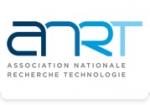 ANRT
ANRT  Groupe AFNOR - Association française de normalisation
Groupe AFNOR - Association française de normalisation  MabDesign
MabDesign  Nokia Bell Labs France
Nokia Bell Labs France 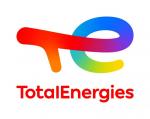 TotalEnergies
TotalEnergies  ASNR - Autorité de sûreté nucléaire et de radioprotection - Siège
ASNR - Autorité de sûreté nucléaire et de radioprotection - Siège  PhDOOC
PhDOOC  Généthon
Généthon  CASDEN
CASDEN  Laboratoire National de Métrologie et d'Essais - LNE
Laboratoire National de Métrologie et d'Essais - LNE  MabDesign
MabDesign  SUEZ
SUEZ  Aérocentre, Pôle d'excellence régional
Aérocentre, Pôle d'excellence régional  ONERA - The French Aerospace Lab
ONERA - The French Aerospace Lab 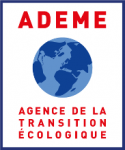 ADEME
ADEME  Tecknowmetrix
Tecknowmetrix

